Commuting Options
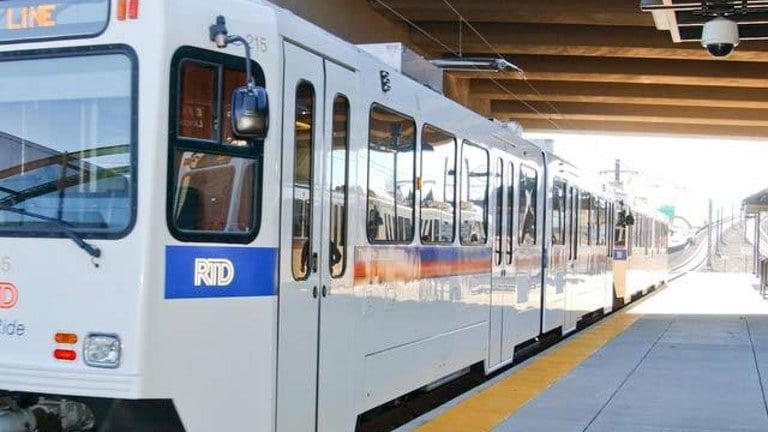
There are numerous ways to commute and travel around Colorado. Residents and visitors alike can utilize transit, biking, walking, carpooling, and vanpooling options for commute and personal trips. Additionally, inter-regional travel via CDOT’s Bustang and commuter and/or light rail connects long distance travelers to their desired destinations.
Check out the many smart transportation options available within the State of Colorado below.
Commuting by transit offers travelers a convenient, cost effective and reliable option for both commutes and personal trips. Most of Colorado’s larger cities and metro areas offer transit systems, many with dial-a-ride services for populations needing assistance connecting from their home to a bus stop.
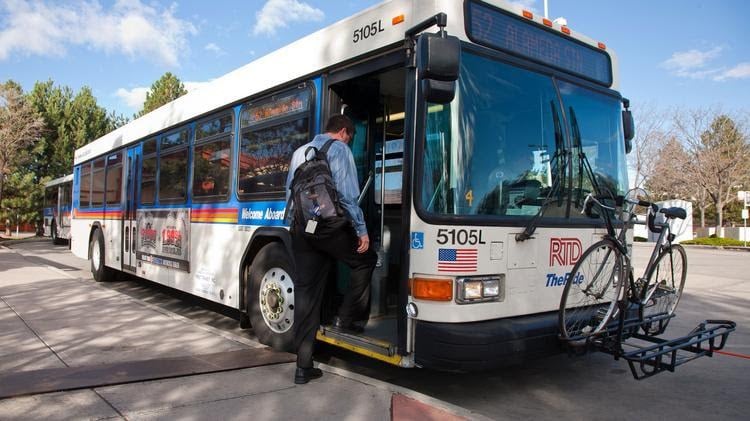
Transit Resources within the Denver Metro Area
Transit within the Denver Metro Area: For commuters within the Denver Metro Area, the Regional Transportation District (RTD) provides transit services within the region, which includes light rail and bus services. Riders can use RTD’s Trip Planner to find and route the best routes within the Denver Metro Area. RTD’s Schedules for bus, light rail, and SkyRide services can be found online. RTD offers many transit apps that help riders plan their trip and receive real-time travel information. Riders can either order tickets online through RTD’s Ticketing App, pay for tickets with exact change on busses, or purchase light rail tickets prior to entry.
Commuters Traveling between Denver and Boulder: The Flatiron Flyer is a bus rapid transit service that connects commuters to and from Denver, Westminster, Broomfield, Louisville, Superior, or Boulder. The Flatiron Flyer bus travels in the US 36 express lanes, which increases convenience and reduces travel times for commuters traveling along that corridor. Monthly passes, day passes, and 3-hour passes can also be purchased via RTD’s Ticketing App and on the buses. Flatiron Flyer Schedules can be found online.
Transit to the Denver International Airport: RTD offers an Airport Service for those travelers within the Denver metro area traveling to and from the Denver International Airport (DEN). RTD's University of Colorado A Line and SkyRide bus service offer convenient, affordable options to get to and from the Denver International Airport (DEN). Catch frequent train service from Downtown Denver, Northeast Denver, and Aurora, or catch the SkyRide bus from Boulder, Thornton, and the Denver Tech Center.
Transit Resources by Region
Transit within the Fort Collins Region: TransFort offers transit services within the City of Fort Collins and Northern Colorado. Google Transit can be used to find the best TransFort routes for riders. Routes and schedule times can be found online.
Transit within the Colorado Springs Region: Mountain Metropolitan Transit (MMT) provides public transportation services in the Pikes Peak region providing over 11,000 one-way trips per day. In addition to bus routes within the City of Colorado Springs, Mountain Metro Transit provides service into Manitou Springs, north to the Chapel Hills Mall, and south into the Widefield area. Routing information and tickets and fare information can be found on MMT’s website.
Transit within the City of Pueblo: Pueblo Transit serves the City of Pueblo by offering transit options to residents and visitors alike. Bus schedules, bus routes, and ticketing information can be found online.
Transit within Mesa County: Grand Valley Transit offers transit options within Mesa County, particularly with services within Grand Junction, Fruita, and Palisade. Route schedules and fare prices can be found on Grand Valley Transit’s website.
Transit within Boulder: RTD provides limited bus services out of Boulder to other cities within the area including Denver. Additionally, the Hop Bus in Boulder services the City of Boulder, particularly in the area around the University of Colorado Boulder campus.
Transit within Loveland: The City of Loveland Transit offers a transit service to residents and visitors via multiple routes servicing the City of Loveland. Routes, schedules, and bus fares can be found on the City of Loveland’s Transit website.
Transit within the Greeley Region: Greeley Evans Transit provides transit services within the City of Greeley and the City of Evans. Routes and schedules, along with tickets and fares can be found on their website.
Other Transit Services Throughout Colorado
Rural Transit Offerings and Services: Many rural Colorado communities and counties offer public and privatized transit services that allow Coloradans and visitors the opportunity to travel within Colorado’s rural communities.
Inter-Regional Transit Services: Check out Colorado’s Inter-Regional Transit Services to learn more about inter-regional transit options servicing the State of Colorado. These services are for long distance travel within Colorado and to destinations outside of Colorado.
Resources for Businesses
Within the Denver Metro Area: For employers within the Denver Metro Area, RTD offers a subsidized EcoPass. The EcoPass offers unlimited rides on RTD’s bus, train, Flatiron Flyer, and SkyRide services for up to a year.
Employers benefit from granting their employees a free EcoPass, including:
- Reduced payroll taxes via a pre-tax benefit
- Recruitment and retention tool
- Enhances morale and productivity
Biking is a great commuting option to get to work, run errands, or recreate. Biking reduces the amount of congestion on the roads and reduces emissions released related to combustion engines. Biking is a healthy commuting option that provides numerous health benefits to riders, including physical health benefits received from exercise and mental health benefits from an increase in physical activity.
Biking Routes and Maps
State of Colorado: CDOT’s Colorado Bicycle & Byways Map highlights all of the active bicycle corridors, including on-street bike lanes, paved multi-use paths, and unpaved multi-use paths.
Denver: The City of Denver’s Bike Map displays bike lanes, protected bike lanes, shared-use sidewalks, and multi-use trails within the City of Denver.
All Colorado Regions: Bicycle Colorado offers bike maps and resources for many regions within Colorado.
Bike Map Apps: Many trip planning applications, such as Google Maps, Moovit, and TripGo offer bicycling routing options.
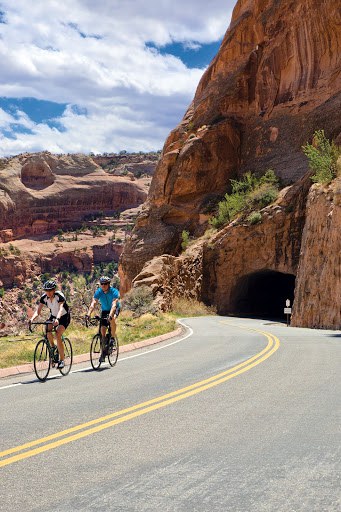
Bicycle Safety
Following all of the rules of the road and understanding biking safety can allow bikers to stay safe while riding bikes for commuting or recreational purposes. The Colorado Department of Transportation’s Bicycling Manual: A Guide to Safe Bicycling provides bicyclists safe riding techniques and rules of the road.
The State of Colorado has several bicycling laws to help keep cyclists safe while biking. The League of American Bicyclists offers numerous bicycle training videos about safe riding behaviors
Bike-n-Ride via Transit
Bikes are allowed on all RTD buses and light rails, allowing you to bike to a station and take your bike on the bus or light rail. Check with the local bus service provider in your area to see if bikes are allowed on buses. RTD’s Bike-n-Ride website contains information about taking a bike onto the light rail, commuter rail, and buses. When taking your bike on the light rail, there will be a designated spot for your bike at the back and front of each train, where bikers must stand and hold their bike during the train ride. When taking your bike onto one of the RTD buses, you will need to secure your bike to the front of the bus via the pull-down bike rack.
Denver Metro Area Bike Lockers and Bike Racks at Transit Stations
RTD also offers secure, housed-in bicycle lockers that active bicycle commuters can rent for $110 a year, with $50 being refunded at the end of the year once the padlock is returned. More information on this program can be found on RTD’s Bike-n-Ride website, in the section titled “Store Your Bike.” RTD has bike lockers and racks at multiple transit stops located within the RTD service zone for users interested in combining biking and transit trips.
Other Biking Resources
- Bicycle Colorado: Bicycle Colorado is a non-profit that provides riders within Colorado resources, education, and classes for bicycling for commuting and recreation within the State of Colorado.
- The League of American Bicyclists: The League of American Bicyclists represents bicycling in creating safer roads, stronger communities, and a Bicycle Friendly America through education, advocacy, and the promotion of cycling.
Carpooling is where two or more people who live and work in the same area share the cost and responsibilities of driving in their personal vehicle. Carpooling is a great way to commute to work since it reduces the amount of time spent driving, money spent on gas and car maintenance, and reduces congestion on the roads.
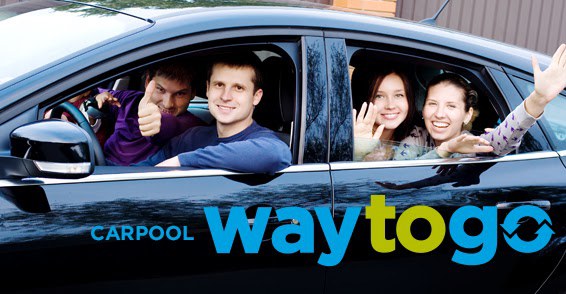
Carpool Matching Services
Denver Metro Area: For commuters in the Denver Metro area, the Denver Regional Council of Governments (DRCOG) has a Carpool Matching Service that matches people with similar commutes to carpools. In this portal, people can search for or add a carpool to the portal.
Colorado Springs Metro Area: Mountain Metro Rides Carpooling Matching Service is a free, automated carpooling matching service through Ridepro. Commuters can sign up and find possible commuting partners who live and work near each other.
Park n’ Ride
RTD Park n’ Ride: There are dozens of RTD Park-n-Ride locations within the Denver Metro Area to get you closer to your transit stop or to serve as a meet up location for carpools. Park-N-Ride locations are located right next to an RTD train or bus station. Some Park-N-Rides are free to residents who have a license plate registered to an address within the RTD service district, while residents outside of the RTD district may have to pay a small daily fee to park there.
CDOT Park n’ Ride: CDOT offers many Park n’ Ride locations throughout the State of Colorado, which commuters can use as meet up spots for carpooling to work or to large events.
Vanpooling is a great commuting option for commuters that live 15 or more miles away from their work location. Vanpools contain five or more riders who share the monthly cost of the van along with driving duties. Vanpoolers live near and work near each other. Typically, vanpools will meet at one or two central meeting locations, such as a park n’ ride or market parking lot, and will drive into work together. Benefits of riding in a vanpool includes saving money, reducing the wear and tear on personal vehicles, and freeing up driving time for riders while commuting.
Cost and Payments
In a vanpool, a company will typically provide a new vehicle, gas, maintenance, and insurance for the vanpool participants. Vanpoolers typically pay vanpooling fees on a monthly basis.
Vanpool Matching Services
North Front Range Commuters: The North Front Range Metropolitan Planning Organization hosts VanGo, which is a vanpool service provider serving the North Front Range community. VanGo’s Vanpools range from 20 miles to just under 100 miles each way. Commuters that either live or work within the North Front Range Metropolitan area can look for and sign up for vanpools through VanGo’s Vanpooling Matcher.
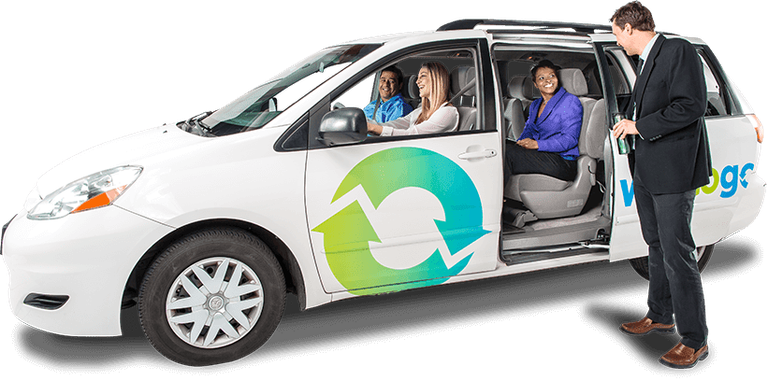
Colorado Springs Commuters: Mountain Metro Rides provides Vanpooling options for commuters who live and work near each other and start or end their trip within the Colorado Springs Metro area. Commuters pay a monthly fee for a minivan that seats six commuters or full-sized vans that seat up to 10 people. Fuel maintenance, vehicle rent, and insurance are included in the monthly fee that riders pay. Riders can be matched through Mountain Metro Rides’ online Vanpool Matching Service.
Denver Metro Area Commuters: The Denver Regional Council of Governments (DRCOG) partners with Commute with Enterprise to provide vanpooling services for commuters commuting into the Denver Metro Area. DRCOG offers a monthly subsidy off the price for vanpools commuting into the Denver Metro Area. Commuters can be matched with vanpools by searching for existing carpools on DRCOG’s My Way to Go Vanpool Matching Portal. The portal also shows carpool, transit, biking, and walking destinations.
Commuters Along I-25 South: In an effort to improve traveler and worker safety along the 18-mile long construction zone of Interstate 25 between Monument and Castle Rock, rush-hour travelers now can help maximize their commute time by taking advantage of I-25 MyWay - a new partnership between CDOT and DRCOG. I-25 MyWay is offering transit, vanpool and carpool incentives to commuters willing to try a new mode of transportation between Colorado Springs and Denver.Walking is a mobility option that provides commuters with physical and mental health benefits when traveling during shorter commutes or as a combined trip with transit.
As with biking, walking routes might lead you on different streets and roads than what you might normally drive to get to the same location. Therefore, make sure to plan your walking route to find the best route before you leave.
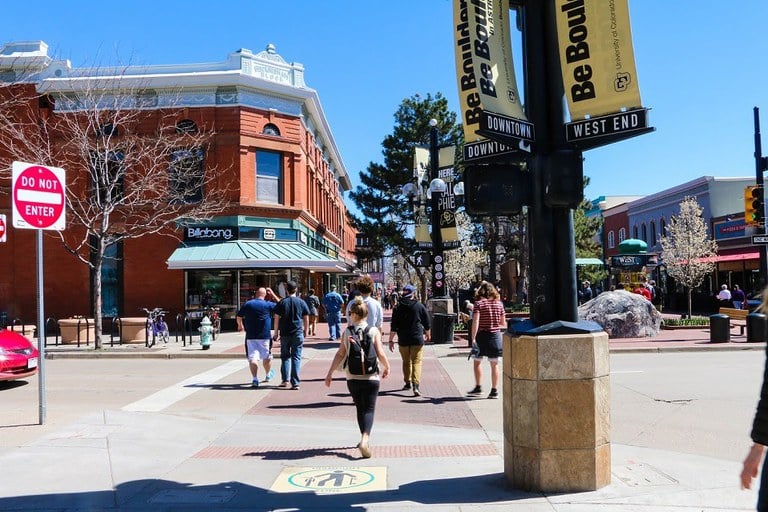
Walking Apps
Many transit apps offer walking routing, including the walking feature on Google Maps, the Moovit app, and TripGo. Additionally, Google Maps also offers an audio routing feature, that can allow pedestrians to receive direction notifications through the speaker or headphone feature on their phone. This allows for a hand-free, easy routing option while walking.
Walking Safety Tips
PedBikeInfo offers some great resources that can help keep pedestrians safe while walking, which are shown below:
Be Safe and Be Seen: Make yourself visible to drivers
-
Wear bright/light colored clothing and reflective materials.
-
Carry a flashlight when walking at night.
-
Cross the street in a well-lit area at night.
-
Stand clear of buses, hedges, parked cars, or other obstacles before crossing so drivers can see you.
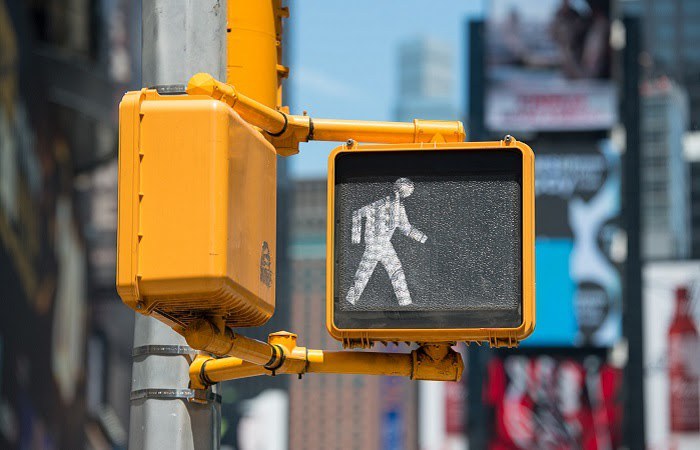
Be Smart and Alert: Avoid dangerous behaviors
- Always walk on the sidewalk. If there is no sidewalk, walk facing traffic.
- Stay sober; walking while impaired increases your chance of being struck.
- Don't assume vehicles will stop. Make eye contact with drivers, don't just look at the vehicle. If a driver is on a cell phone, he or she may not be paying enough attention to drive safely.
- Don't rely solely on pedestrian signals. Look before you cross the road.
- Be alert to engine noise or backup lights on cars when in parking lots and near on-street parking spaces.
Be Careful at Crossings: Look before you step
- Cross streets at marked crosswalks or intersections, if possible.
- Obey traffic signals such as WALK/DON'T WALK signs.
- Look left, right, and left again before crossing a street.
- Watch for turning vehicles. Make sure the driver sees you and will stop for you.
- Look across ALL lanes you must cross and visually clear each lane before proceeding. Even if one motorist stops, do not presume drivers in other lanes can see you and will stop for you.
- Don't wear headphones or talk on a cell phone while crossing
Electric vehicles provide vehicle drivers the opportunity to reduce the amount of harmful emissions released from driving a combustion engine vehicle.
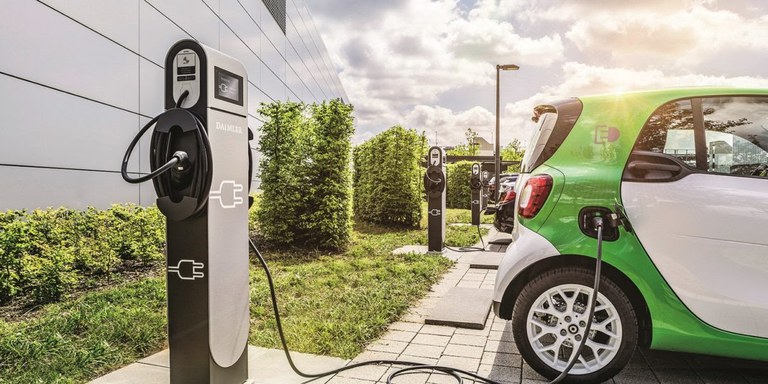
Electric Vehicle Charging Station Locations
Work locations: Some work locations throughout Colorado provide free or reduced cost charging stations for employees to charge their cars while at work.
EV Charging Finder via Alternative Fueling Stations App: The National Renewable Energy Laboratory (NREL) has created the Alternative Fueling Stations App to help electric vehicle owners find charging stations. Users can either use their current location or enter a custom location to find the closest charging stations to them.
EV Charging Finder via ChargeHub: ChargeHub provides locations for most electric vehicle charging stations within the State of Colorado. Results are filtered by city.
EV Charging Finder via Google Maps: Type in either “EV Charging” or “EV Charging Stations” into the search bar of Google Maps to display charging stations within a designated search area.
Boulder County Resources
City of Boulder Charging Stations: The City of Boulder EV Stations offer more than 40 low-cost charging stations throughout the City of Boulder within public parking garages and other public parking areas.
Electric Vehicle Advising: EnergySmart offers Electric Vehicle Advising services for residents who reside within Boulder County. Advising helps users determine which electric vehicle is a good fit, explains various charging options, and covers local and state incentives and credits for purchasing an electric vehicle.
Bustang
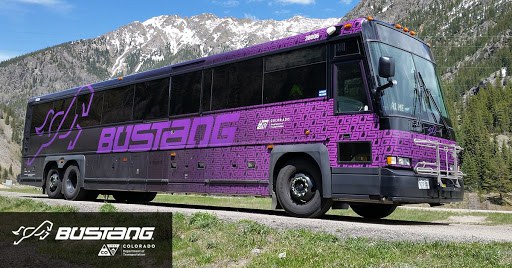
CDOT’s interregional bus service is a long distance public transit operator that runs daily lines throughout the State of Colorado. Bus routes and schedules and ticketing information can be found on Bustang’s website. To purchase tickets online, travelers can download the Bustang App. Seats can not be reserved on any of the Bustang’s standard routes.
Bus Amenities: Each Bustang coach is equipped with a restroom, bike racks, free WiFi, power outlets and USB ports. There is also a wheelchair lift and two wheelchair securement areas on each coach.
Snowstang: Bustang offers Snowstang, a seasonal bus service that operates on weekends and select holidays during the skiing and snowboarding season. The Snowstang brings Denver Metro Area skiers, snowboarders, and nature enthusiasts to many Colorado mountain resorts.
Rail
Scenic Trains: Colorado boasts many scenic trains throughout the State of Colorado. Some of the railroads still in operation today go through untouched Colorado wilderness, making rail travel a scenic opportunity for the traveling public. The Colorado Tourism Office’s Complete Guide to Colorado Train Trips can help travelers find the best scenic trains within Colorado.
Long Distance and Intrastate Travel: Amtrak offers many rail routes within Colorado that can connect long distance travelers to Colorado’s surrounding states. Many Amtrak trains include optional sleeping compartments that can allow travelers the opportunity to travel to farther locations without the need of a car. Travelers can search for rail routes and locations by the various regions within the USA.
Statewide micromobility guide coming soon.
